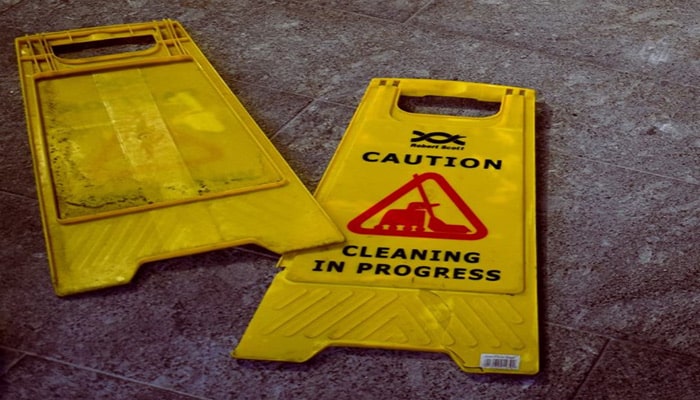
PFAS, or per- and polyfluoroalkyl substances, are synthetic chemicals that have stayed with most of us as long as we’ve been alive. With their chemistry discovered in the 1930s, PFAS soon became the mainstay of industries dealing in water and oil-resistant products.
Initially, PFAS-containing products were embraced for being conveniences that enhanced living. Other general properties (besides oil and water resistance) included temperature resistance, durability, and friction reduction.
Today, these chemicals have become nearly impossible to ignore or escape. Given their properties and applications, this may seem harmless. However, PFAS has become more than a nuisance; it’s a growing health hazard.
PFAS Dangers Not Just Limited to Firefighters
At least since 2017, firefighters have been known to be at risk of PFAS exposure when dealing with liquid fuel fires. This is primarily due to AFFF or Aqueous Film Forming Foam. Discovered in the mid-1960s by the combined efforts of the US Navy and 3M, this foaming agent contains PFAS.
After decades of service, firemen are now suffering the aftermath in the form of cancer – bladder, kidney, testicles, etc. To seek justice for their injuries, thousands have even filed an AFFF lawsuit. Now consolidated into a multi-district litigation (MDL), all lawsuits have been transferred to the District of South Carolina’s Federal Court.
According to TorHoerman Law, the lawsuits are divided into water contamination and personal injury cases. Since AFFF manufacturers like 3M have reached a $10.3 billion settlement for the former, Q4 of 2023 will be dedicated to tackling personal injury lawsuits.
The situation is so dire in some cases that plaintiffs are succumbing to their injuries before receiving justice. Not just the foaming agent, but the National Institute of Standards and Technology (NIST) found PFAS even on firefighting gear. Out of the three clothing layers, the outermost two had the highest concentration of PFAS to make them water and oil-resistant.
This class of synthetic chemicals is already found in everyday consumer products, like dental floss, bicycle lubricants, and stain-resistant couches. Many researchers have sounded the alarm that reaching “a net-zero PFAS concentration is impossible.”
The National Resources Defense Council’s senior strategic director of food and health, Eric D. Olson, considers PFAS harmful for three main reasons –
- PFAS’ carbon-fluoride bond is so strong that it does not easily break down in the environment or the human body.
- Since PFAS are hard to break down, they spread relatively quickly.
- Certain PFAS chemicals are so dangerous that even extremely low levels can have serious health consequences.
This means if companies stopped using PFAS in their products, traces will still be found 10 to 15 years from now if the same manufacturing plant is used. Moreover, half of the US tap water is contaminated with PFAS. A recent study has also warned against rainwater as scientists have found traces of PFAS worldwide, Antarctica included.
These chemicals are known as the poison found in all bodies, including those of unborn babies. Not to mention a study in France discovered harmful levels in breast milk. At this rate, it is impossible to picture a bright future for the next generations. In exchange for fleeting conveniences like stain-free clothes and nonstick cookware, we have sacrificed the environment and our health.
EPA’s Monitoring and Cleanup Efforts
The Environmental Protection Agency (EPA)’s Superfund list includes 180 sites contaminated with PFAS. The agency has made PFAS monitoring and cleanup a top priority, requiring regular testing of public water systems. However, reversing the consequences of eight decades will be far from easy.
A US Department of Defense (DOD) official, Richard Kidd, stated that it may take years to fully understand the scope of PFAS damage. Once understood, another couple of decades may be needed before cleanup efforts bear fruit. This statement was made just for PFAS-contaminated areas near military installations.
The Pentagon’s cleanup efforts are already falling short due to a lack of funding. It says an estimated $7 billion will be needed, a whopping $2.2 billion over the previous year’s estimate. However, the pressing question is to what extent is PFAS cleanup possible should the required funding be provided?
According to the EPA, three treatment methods have shown some promise for PFAS removal. These include –
- The granular activated carbon process
- The ion exchange resins method
- The use of high-pressure membrane systems
Nonetheless, given that over 120,000 US locations are currently exposed to PFAS, the problem has already taken historical proportions. Also, that’s the US alone, but PFAS contamination is a growing problem worldwide.
Ways to Reduce Risk Exposure at All Levels
It is true that avoiding PFAS completely is not something one should aim for (largely because it’s impossible). But, the issue needs to be addressed at all levels – national, state, and individual. For instance – the EPA has sprung into action under the Biden administration, accelerating PFAS research, monitoring, and cleanup.
It has even restored scientific integrity by disclosing key actions being taken. At the municipality and individual levels, citizens can join the EPA’s efforts in the following ways –
- Municipalities must test their different public water supply systems for PFAS levels. The same should be compared with their respective state’s standards or the EPA’s Health Advisory Levels (HALs). In case of any danger, the state EPA or local water utility must be contacted for assistance.
- Drinking water wells must also be tested frequently, and the state EPA must be notified of any danger. Residents can also consider installing in-home water treatments like filters to reduce risk exposure.
- It’s important to find out where the local seafood comes from. Do not consume seafood belonging to waterbodies impacted by PFAS.
- It is recommended that nonstick cookware be completely avoided, even those that say “PFOA-free.”
- If replacing the cookware is not an option, it’s best to avoid preheating it or heating it in an oven over 400◦F.
- PFAS may be present in takeout containers and microwave-friendly popcorn bags. It’s best to carry glass or metal containers to bring home the leftovers. Also, loose popcorn popped on the stove is a healthy alternative.
- Shop for PFAS-free dental floss, as most mainstream brands’ products are contaminated.
- Avoid purchasing stain-resistant coatings, whether available in the form of carpets, couches, or clothes.
What Does the Future Hold?
The current methods of PFAS removal do little to protect the environment or health. They are not benign since PFAS only break apart after incineration or deep well injections. Dangerous traces are still present in the air and water, but a new study is offering some glimmer of hope.
The primary aim was to find how exactly PFAS decomposes so that a non-polluting disposal method could be discovered. The solution (in the form of bacteria) may work for two highly toxic chemicals in the group of 12,000. These include the Perfluorooctanoic Acid (PFOA) and Perfluorobutanoic Acid (PFBA).
The research is still in its preliminary stages but deemed as “meaningful” in future PFAS remediation. Meanwhile, it’s important to take necessary steps at the national, state, and individual levels to reduce PFAS risk exposure.
Follow – https://digitalmaurya.com for More Updates



